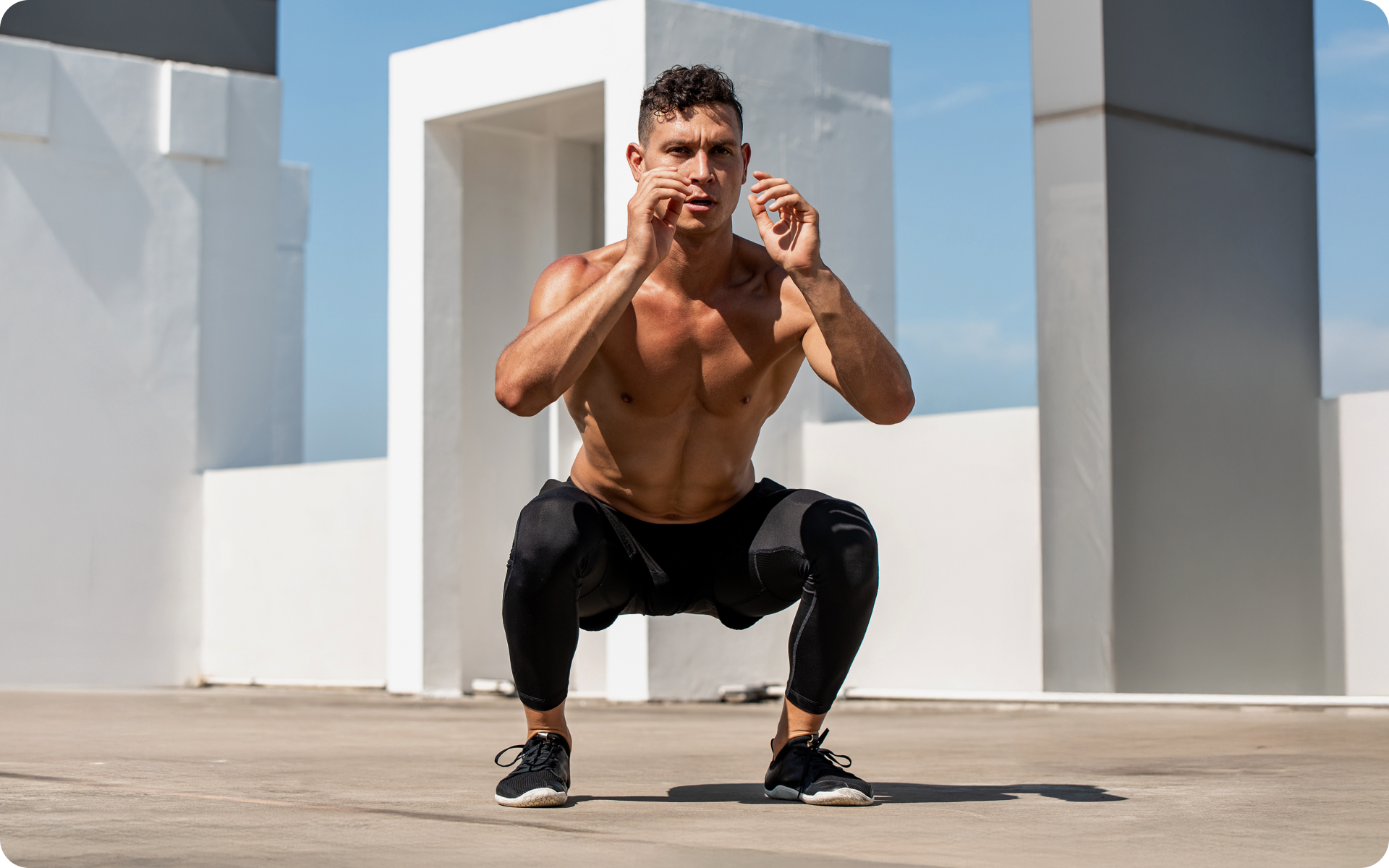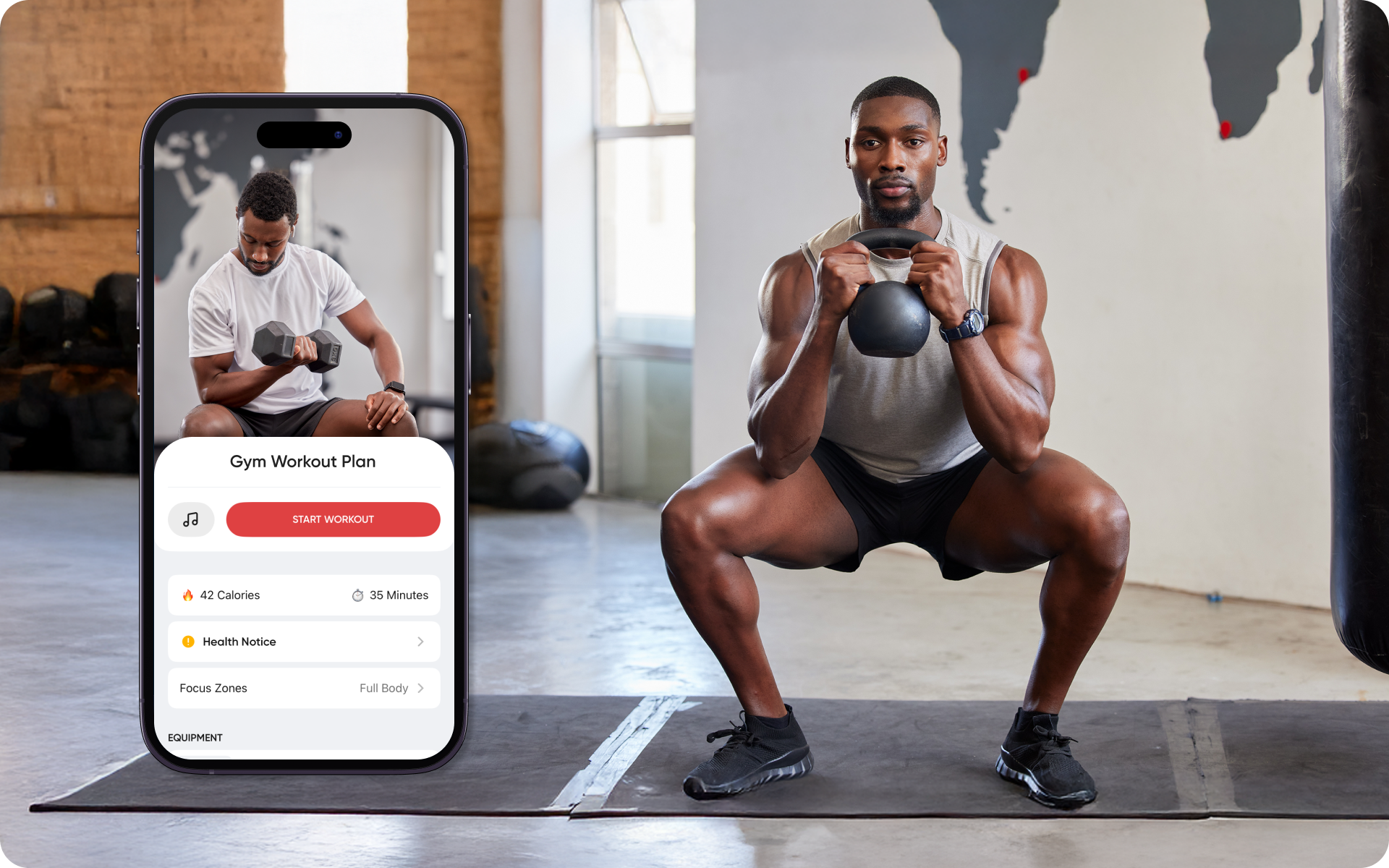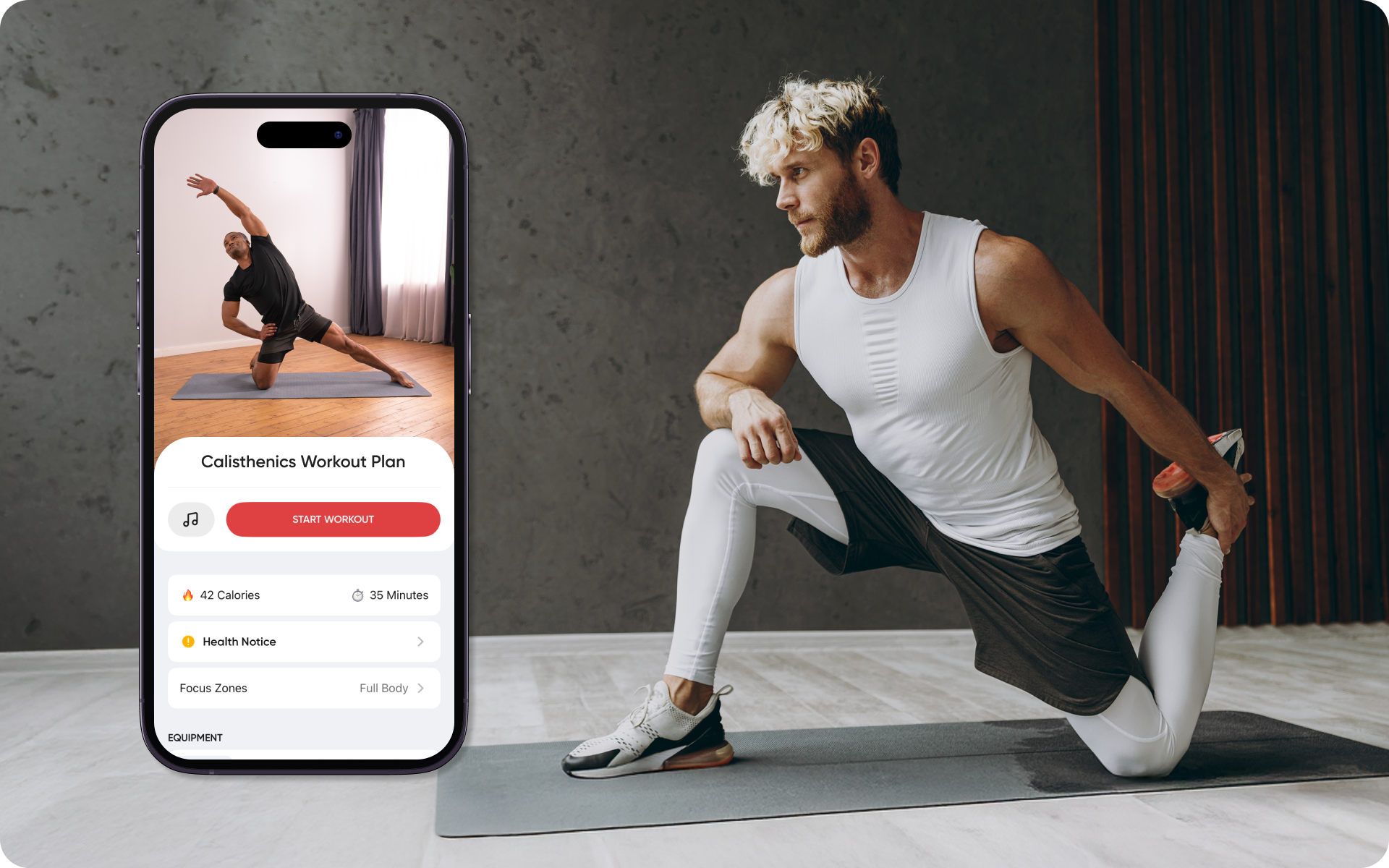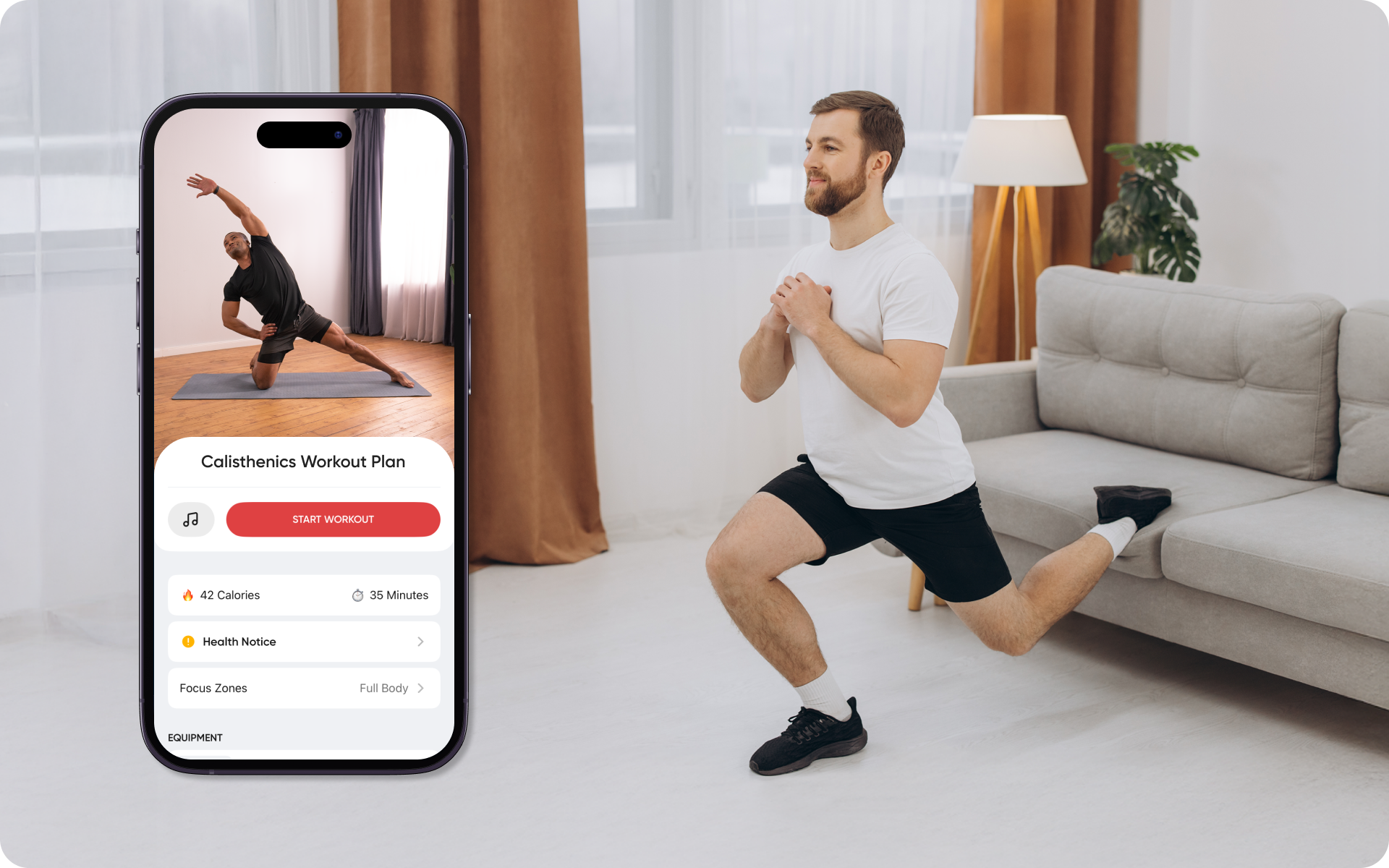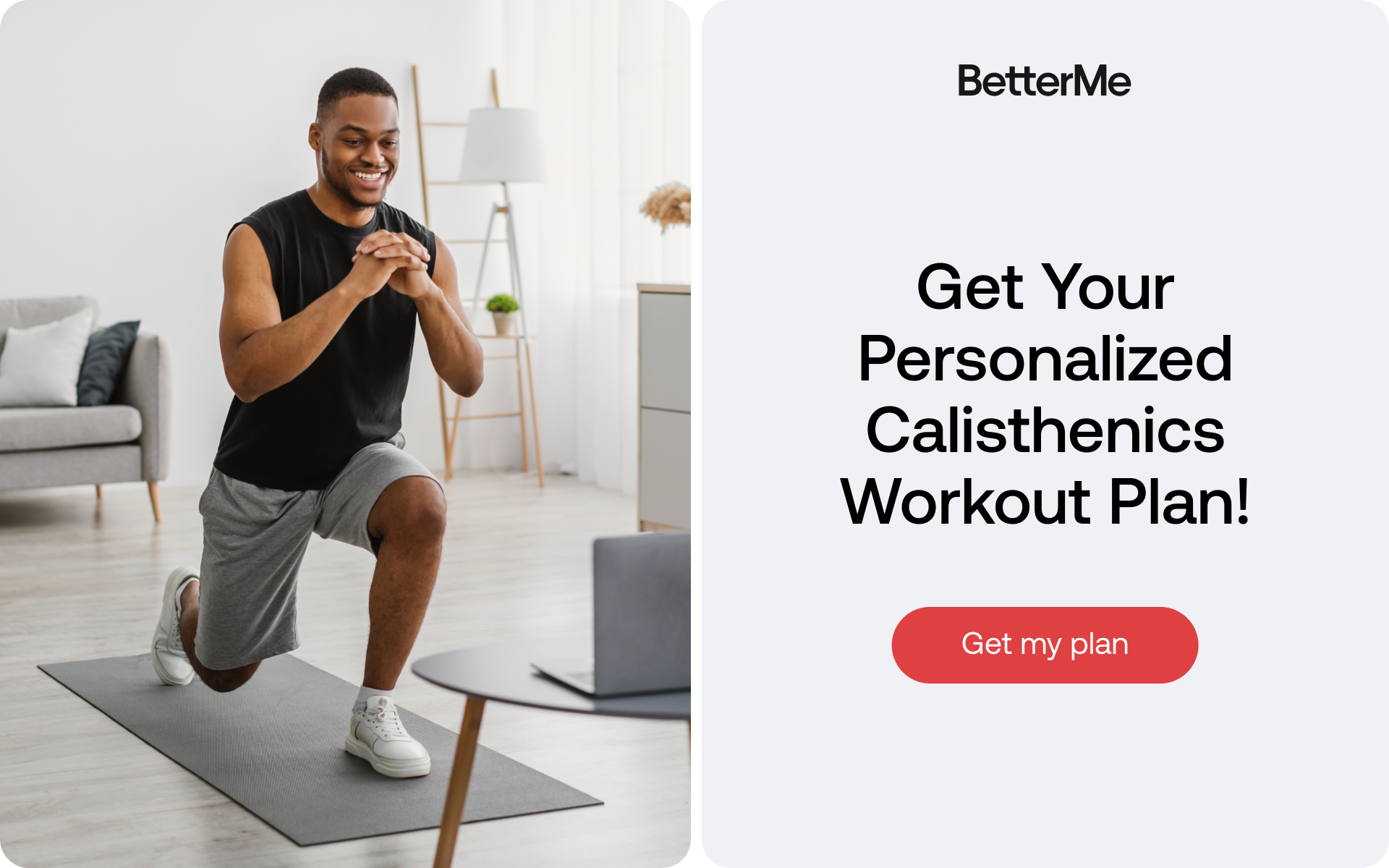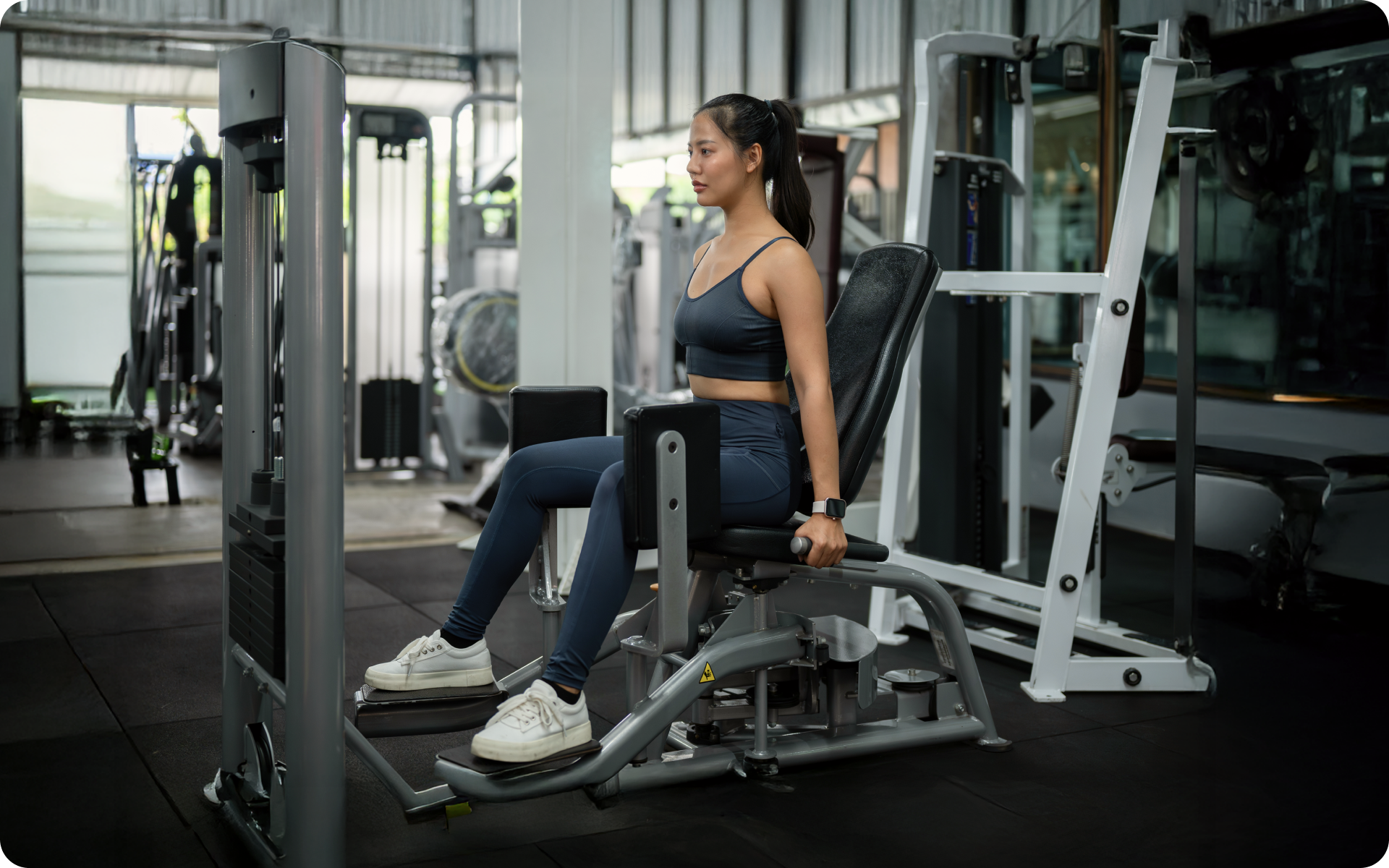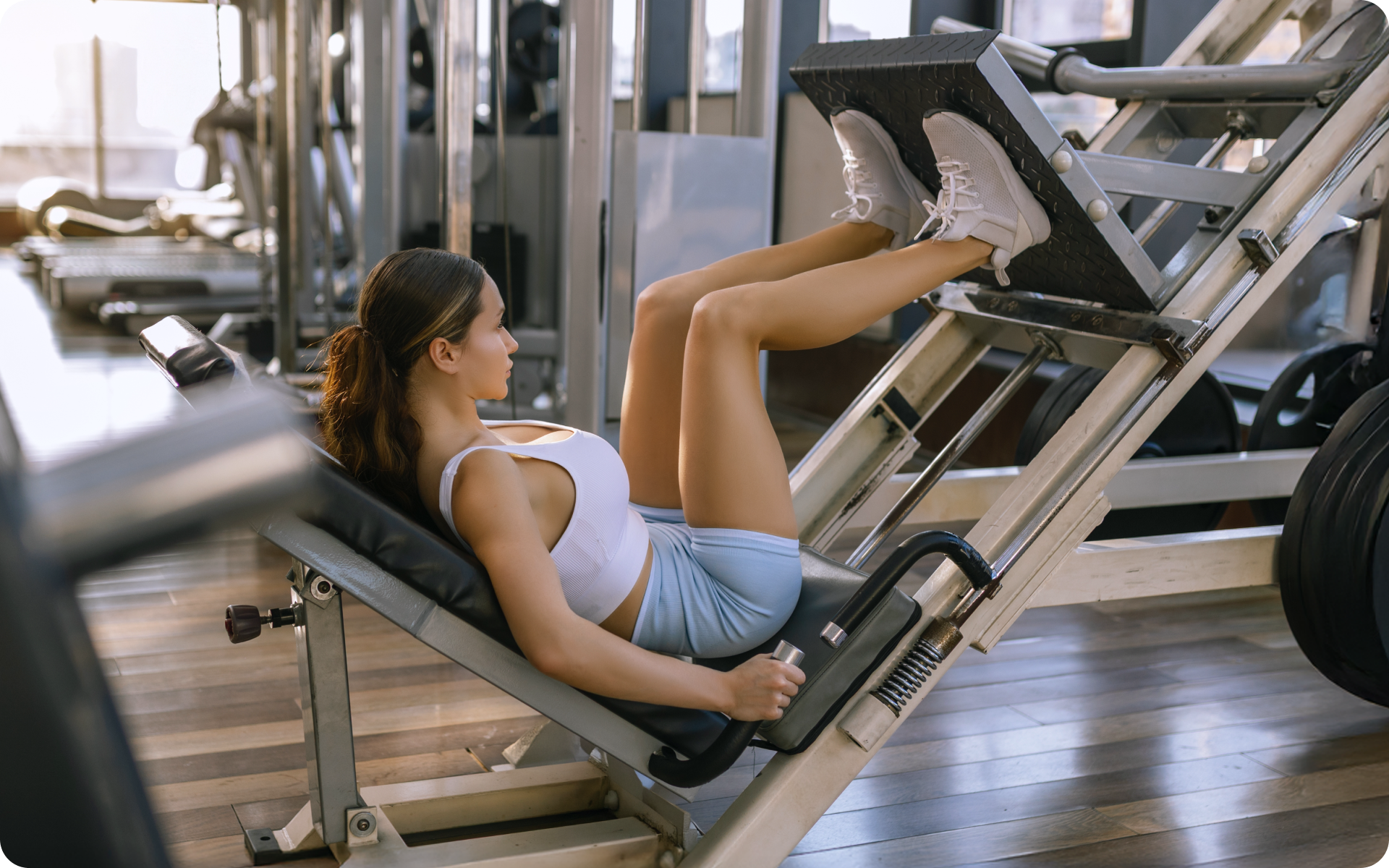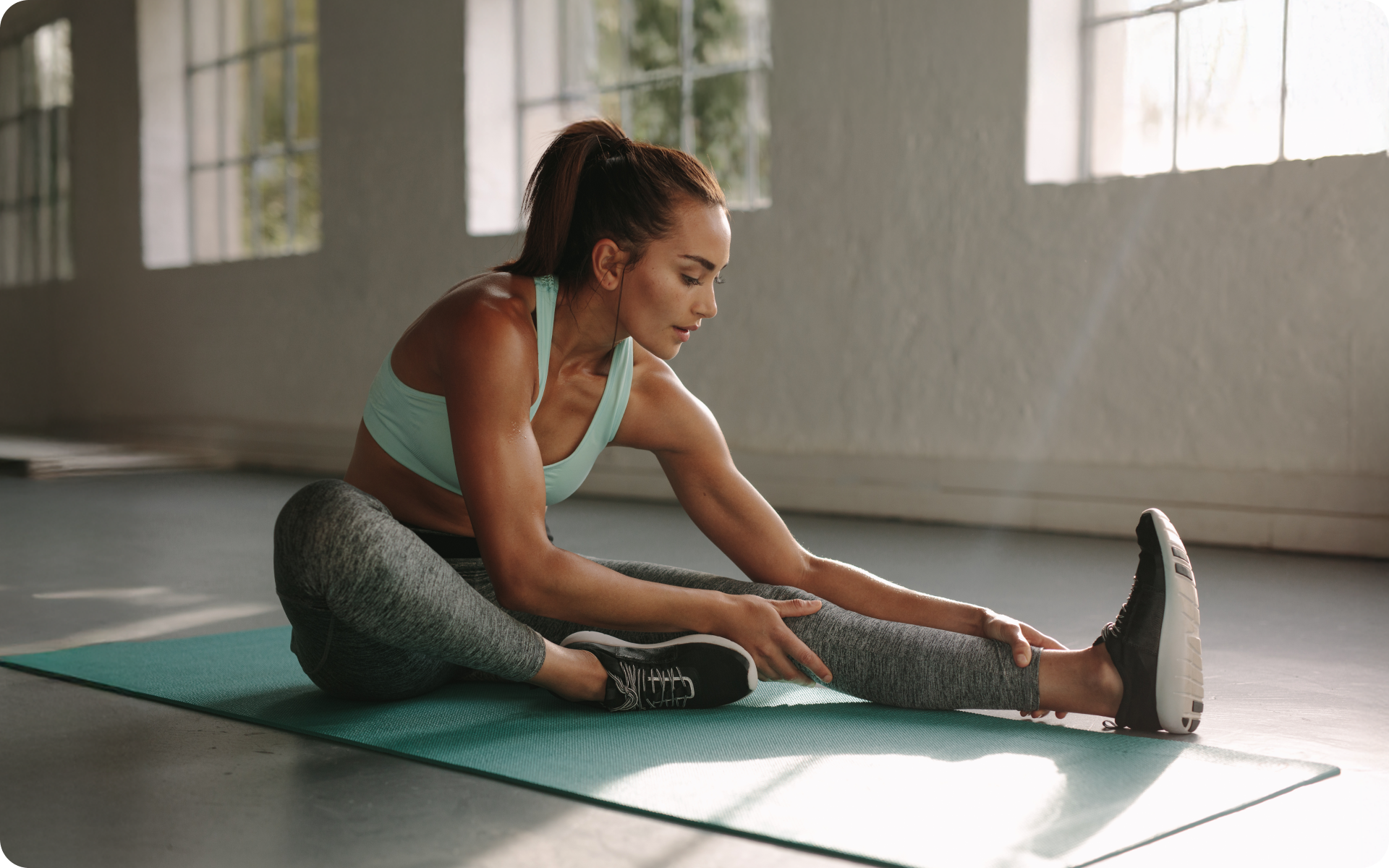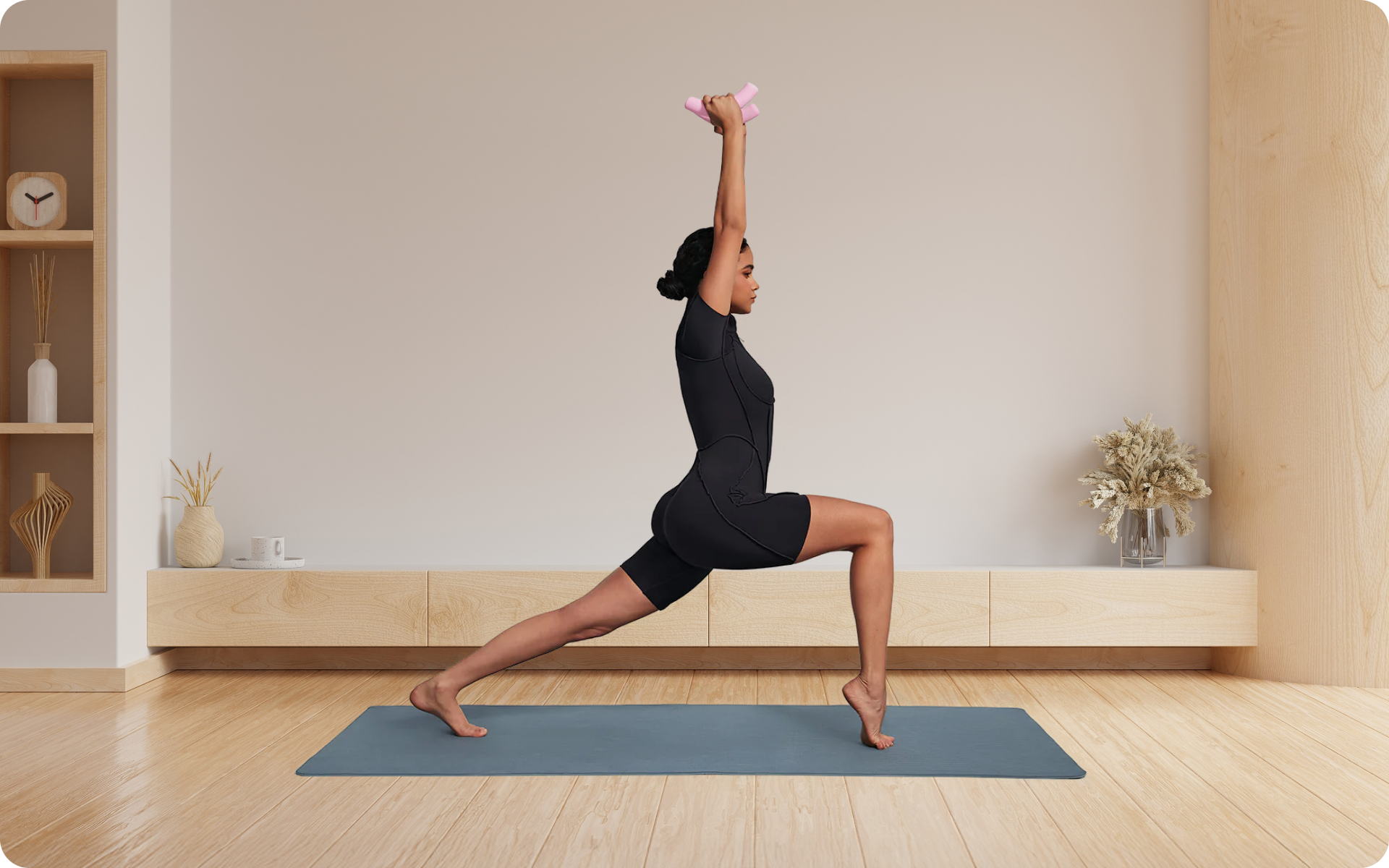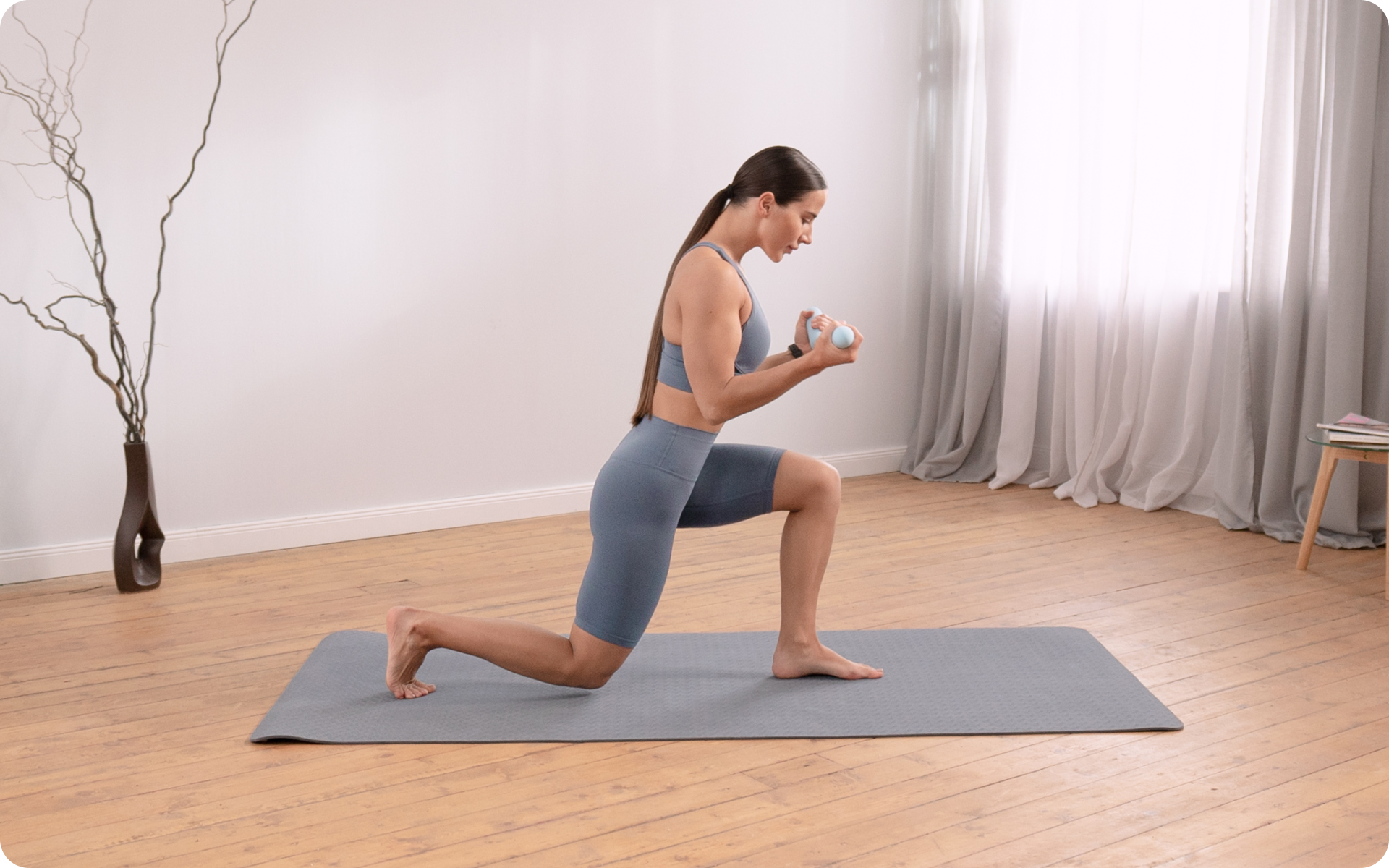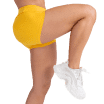Gentlemen, it’s time to get down and dirty. That’s right! I’m talking about squats — the exercise that makes even the most seasoned gym-goer question why they started their fitness journey in the first place.
But fear not, my fellow men, for the benefits of squats far outweigh the temporary discomfort of shaking legs and aching glutes.
Not only will they give you a derriere that would make Sir Mix-a-Lot proud, they’ll also improve your overall strength and posture.
So buckle up and get ready to learn why squats should be a staple in every man’s workout routine.
How Do Squats Work?
Before getting into how squats work, let’s first talk about the mechanics. In a nutshell, squats are a compound movement that targets multiple muscle groups in the lower body and the core (9).
The primary muscles that get worked are the quadriceps, hamstrings, and glutes, in addition to the core muscles and lower back to provide stability. When you perform a squat, your body works as a unit to produce a force that lifts the weight.
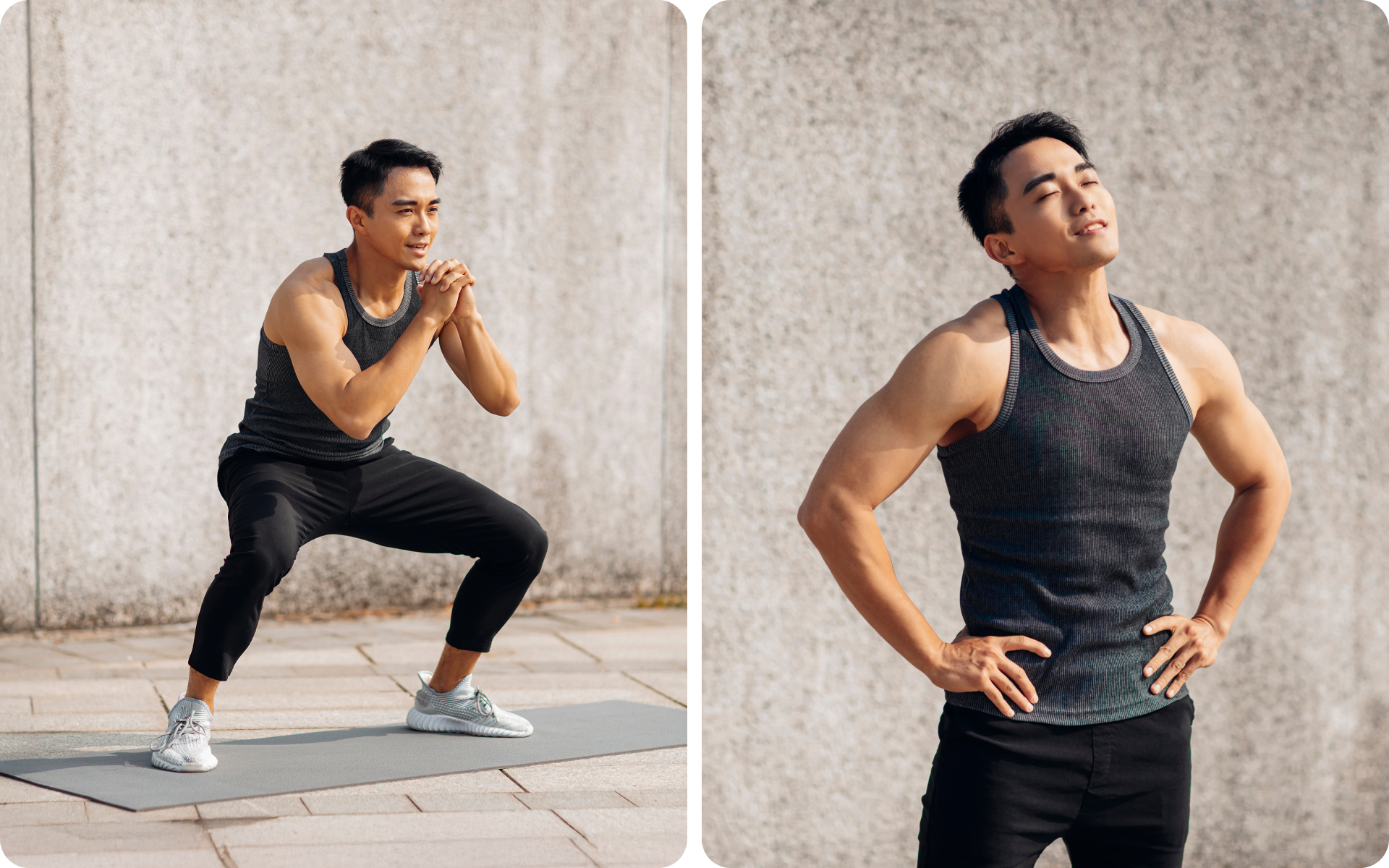
The quadriceps at the front of the thigh extend the knee joint, while the hamstrings and glutes at the back of the thigh extend the hip joint. The core muscles and lower back help keep the torso upright and prevent unwanted movement.
The beauty of squats is that they’re an effective and efficient training tool. By hitting multiple muscle groups at the same time, they allow a comprehensive and brief workout that maximizes both your time and results. So, if you’re looking to tone up your lower body and core, squats are an excellent exercise to add to your routine (9).
Intense sweat sessions, working weight loss tips, lip-smacking recipes come in one package with the BetterMe app. And all of it is at your fingertips, start transforming your life now!
Do Squats Work for Men?
There’s a common misconception surrounding squats that they’re only for women who want to achieve a shapely backside. However, as mentioned earlier, squats are a full-body workout that targets multiple muscle groups at once and can benefit men too.
They can help men achieve their fitness goals, whether that be building muscle or improving overall health and well-being.
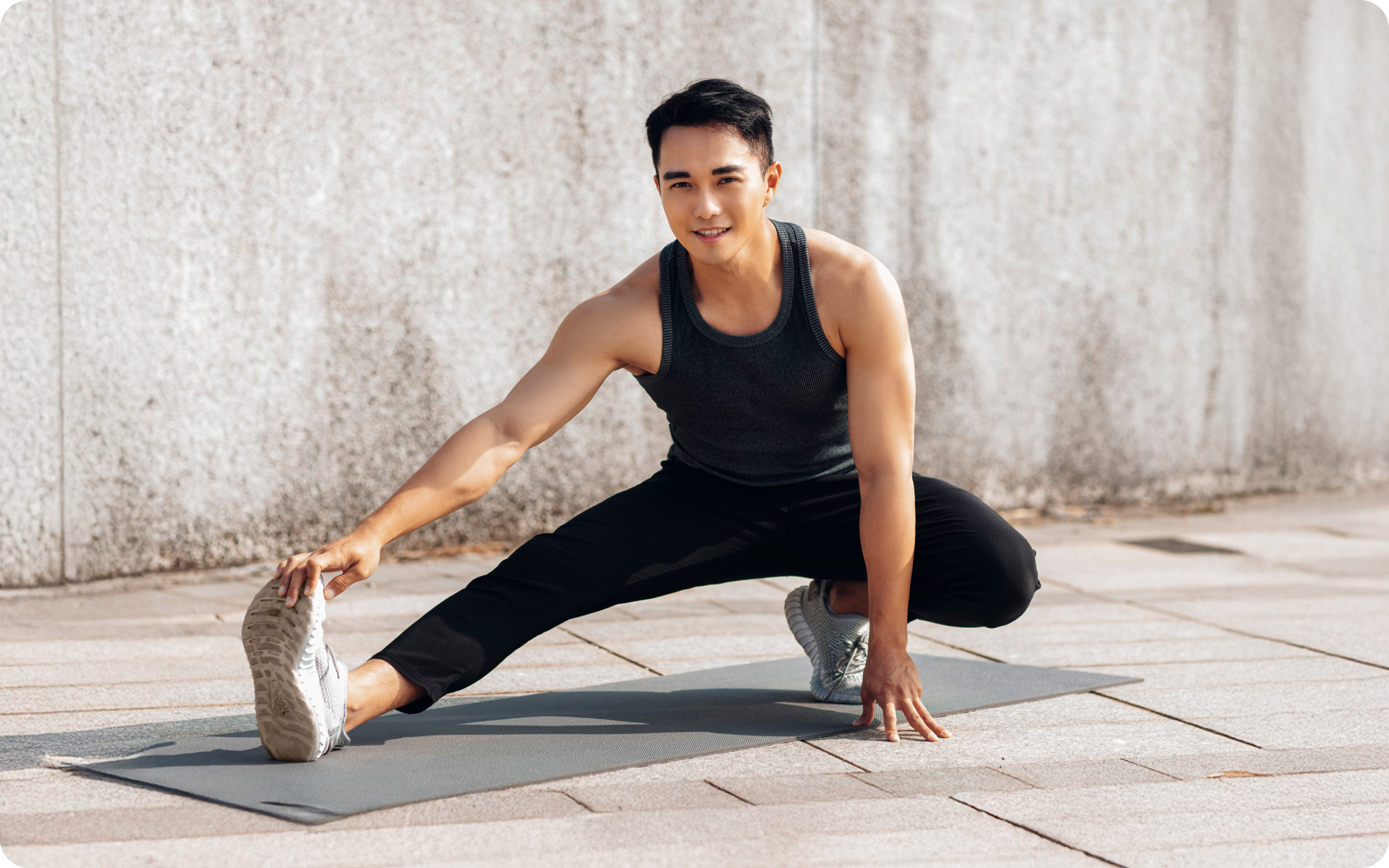
Why Are Squats Good for Men?
Squats may look like a daunting exercise, but the benefits are undeniable.
Below are 11 different benefits of squats for men:
1. Build Strong Quadriceps and Hamstrings
The quadriceps and hamstrings are two of the most important muscle groups in the lower body. Squatting targets these muscles by requiring a large range of motion from the knee and hip joints.
Regular squatting can lead to increased strength and improved overall appearance. Not only do strong quadriceps and hamstrings help with everyday activities, such as walking and climbing stairs, they also improve athletic performance (3).
Adding squats to your exercise routine can help you achieve greater strength and balance in these muscles.
2. Build Strong Glutes
The glutes are an essential muscle group to overall health, as well as appearance. Many people spend a lot of time sitting, which can cause the glutes to become weak and underdeveloped.
Squats can help shape and strengthen the glutes, which leads to improvements in posture and performance. They’re also essential for everyday activities such as walking, running, and climbing stairs. By adding squats to your routine, you can help improve the development of this muscle group and overall appearance (1).
3. Build Core Stability
Squats require stability of the core muscles to keep the torso upright and prevent unnecessary movement. By using the core muscles for stability while performing squats, you’re working the lower body and also building core strength.
Squats are an effective way to target the core and lower back muscles, improve stability, and reduce the risk of injury. Adding squats to your routine can help improve core stability, make activities of daily living easier, and reduce the risk of lower back pain (2).
4. Aid with Hormone Regulation
Squats have been shown to increase testosterone levels (6), a hormone that contributes to muscle growth and overall fitness.
By activating larger muscle groups, such as the quadriceps and hamstrings, squatting helps promote hormonal balance, which can lead to increased muscle growth and strength (6).
Regular squatting can provide benefits for overall hormone regulation and muscle growth, which makes them an excellent addition to any workout routine.
Read more: How Many Calories Does 100 Squats Burn?
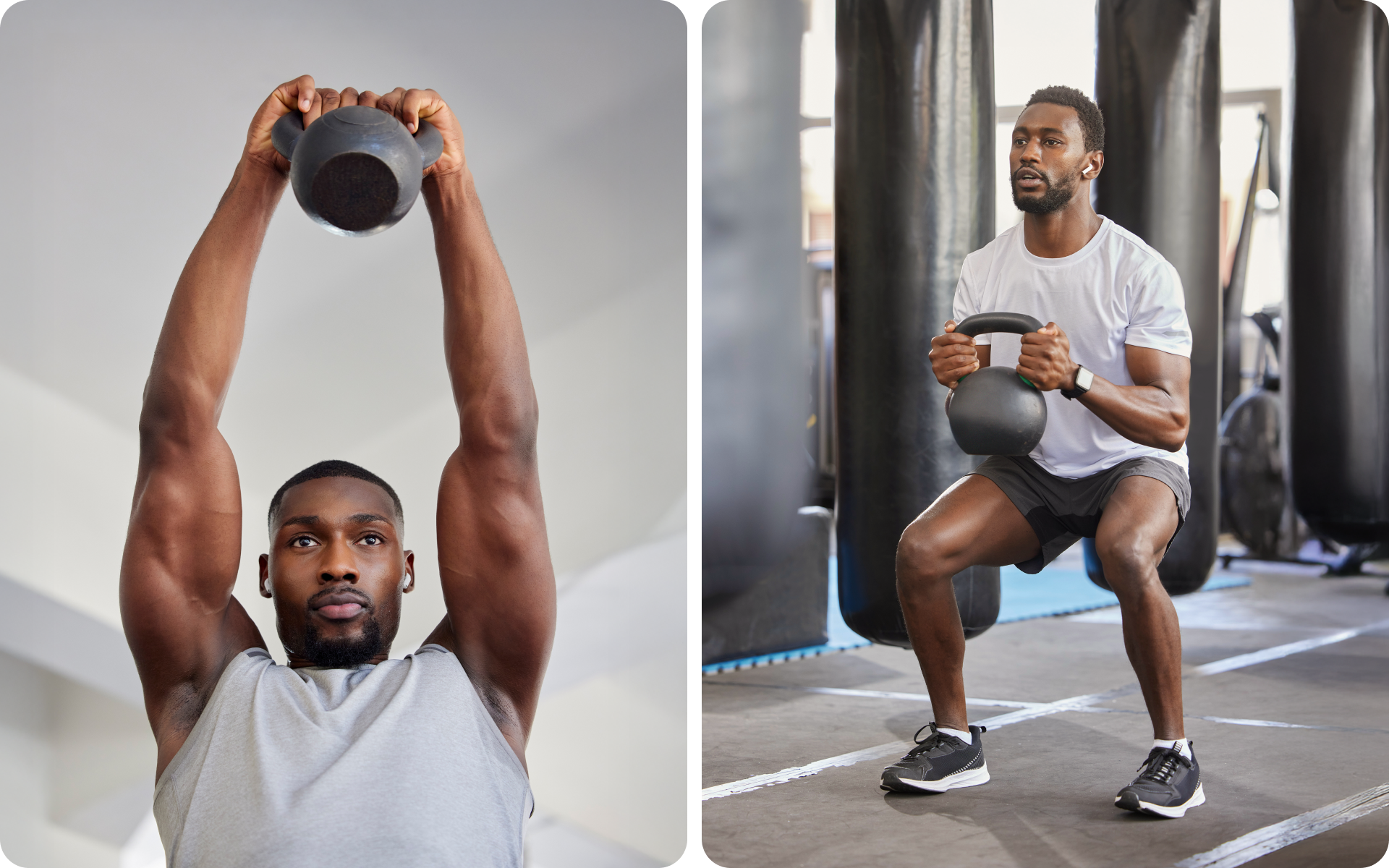
5. Improve Functional Movement
Squatting is a functional movement that mimics everyday activities such as sitting down and standing up. By performing squats, you improve your ability to perform these movements, thus improving your overall quality of life.
Squats can help increase mobility and flexibility in the lower body while also improving overall strength. Adding this exercise to your routine can help improve balance, stability, and coordination, making everyday activities easier and more accessible (10).
6. Improved Posture
When they’re performed with proper form, squats can improve posture by strengthening the muscles in the back, shoulders, and core. This can help prevent back pain and improve overall body alignment. By maintaining proper posture during squats, you’re also training your body to maintain proper posture throughout the day (9).
7. Increased Mobility
Squats require a large range of motion from the hips, knees, and ankles, which makes them an excellent exercise for improving mobility (10). As you squat, your joints move through a full range of motion, which can improve joint mobility and flexibility.
Regular squatting can help increase hip and ankle mobility, which leads to better athletic performance and a reduced risk of injury.
8. Increased Calorie Burn
Squats are a compound exercise that targets multiple muscle groups, which makes them an effective way of burning calories. The increased muscle mass from squatting also boosts your metabolism, which helps burn more calories at rest (3). Adding squats to your workout routine can help you burn extra calories and achieve your weight loss goals.
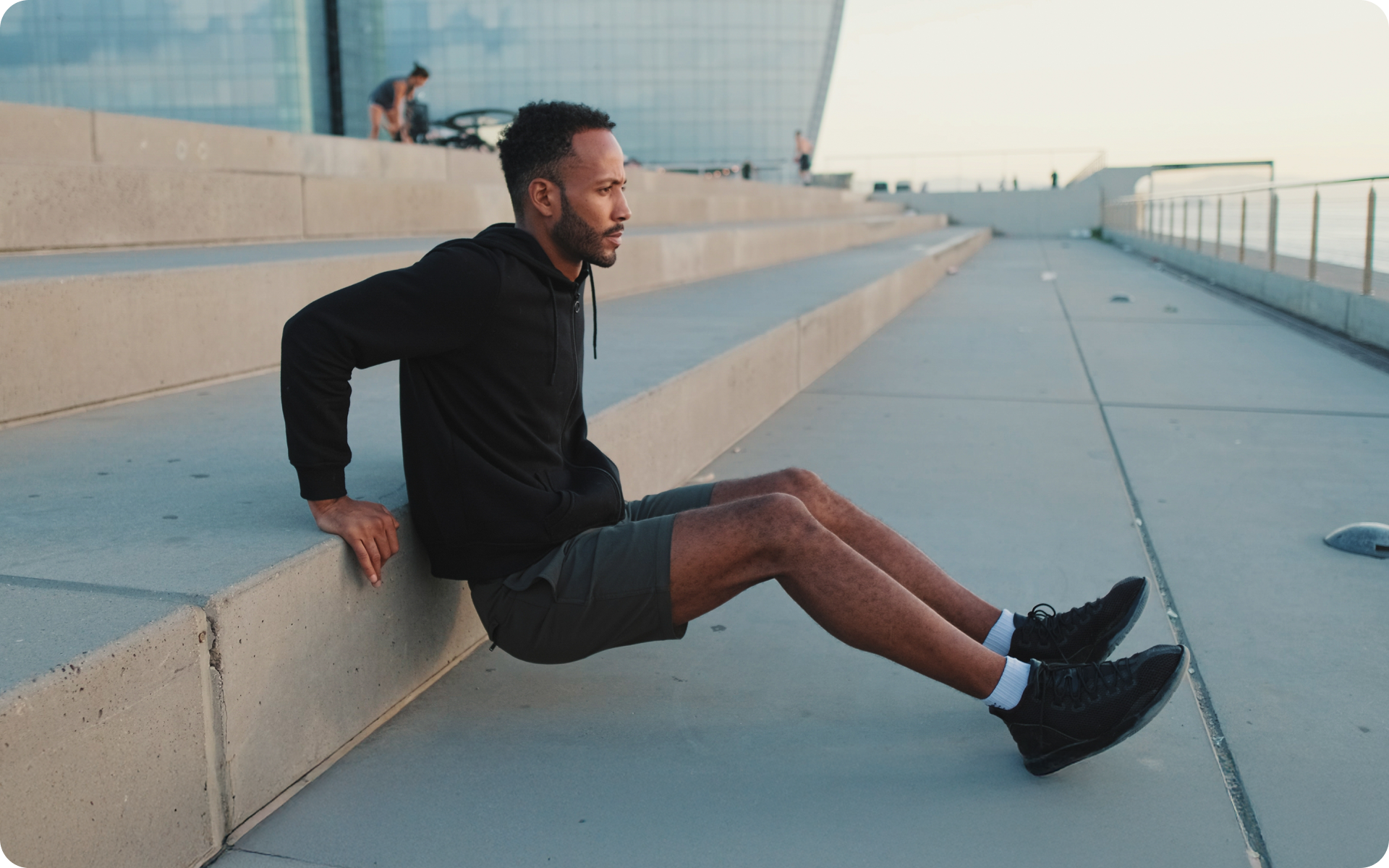
9. Improved Bone Density
Weight-bearing exercises such as squats have been proven to improve bone density, which is important for preventing osteoporosis and increasing overall bone health (5). By adding this exercise to your routine, you can help strengthen your bones, reduce your risk of fractures, and maintain healthy bone density as you age.
10. Reduced Risk of Injury
Squats can help reduce the risk of injury by strengthening the muscles that surround the joints. As you squat, the muscles in your legs, hips, and core are engaged, which helps stabilize the joints and reduces the risk of injury (9).
Squats also help improve flexibility and mobility, which can prevent injuries commonly caused by tight and weak muscles. Incorporating squats into your routine can help reduce your risk of injury and improve overall joint health.
11. Improved Balance
Squats require a great deal of balance and stability to perform, which can lead to improved balance over time. By performing squats regularly, you can improve your body’s ability to maintain balance and stability during movement (9).
This can be particularly beneficial for older adults who may be at higher risk of falls due to a loss of balance. Improved balance can also lead to better athletic performance and reduced risk of injury during physical activity.
Whether you’re looking to simply pep up your fitness routine, jazz up your diet with mouth-watering low-calorie recipes or want to get your act together and significantly drop that number on your scale – BetterMe app has got you covered! Improve your body and revamp your life with us!
How to Perform the Basic Back Squat
The back squat is a classic exercise that should be in every gym goer’s toolbox. It’s an excellent way to build lower body strength and power while also targeting the core, lower back, and upper body.
Here’s a step-by-step guide on how to perform the basic back squat safely and correctly:
- Start with a proper stance. Stand with your feet hip-width apart, toes pointing outward slightly. Keeping your chest up and your core tight, take a deep breath, and brace your core.
- Proper bar placement. Place the barbell across your upper back, just below the base of your neck, so it rests on the meaty part of your traps. Your grip should be shoulder-width apart, with your elbows pointing down and back. Take another deep breath and brace your core.
- “Sit back” and squat. Start to “sit back” into your squat, bending at the hips and knees and keeping your core tight. Keep your knees in line with your toes and make sure they’re not caving inward. Squat down until your thighs are parallel to the ground.
- Stand up: Drive your heels into the ground and stand up. Exhale slowly as you stand up, keeping your chest up and core tight.
- Repeat. Repeat the exercise for the desired number of sets and repetitions.
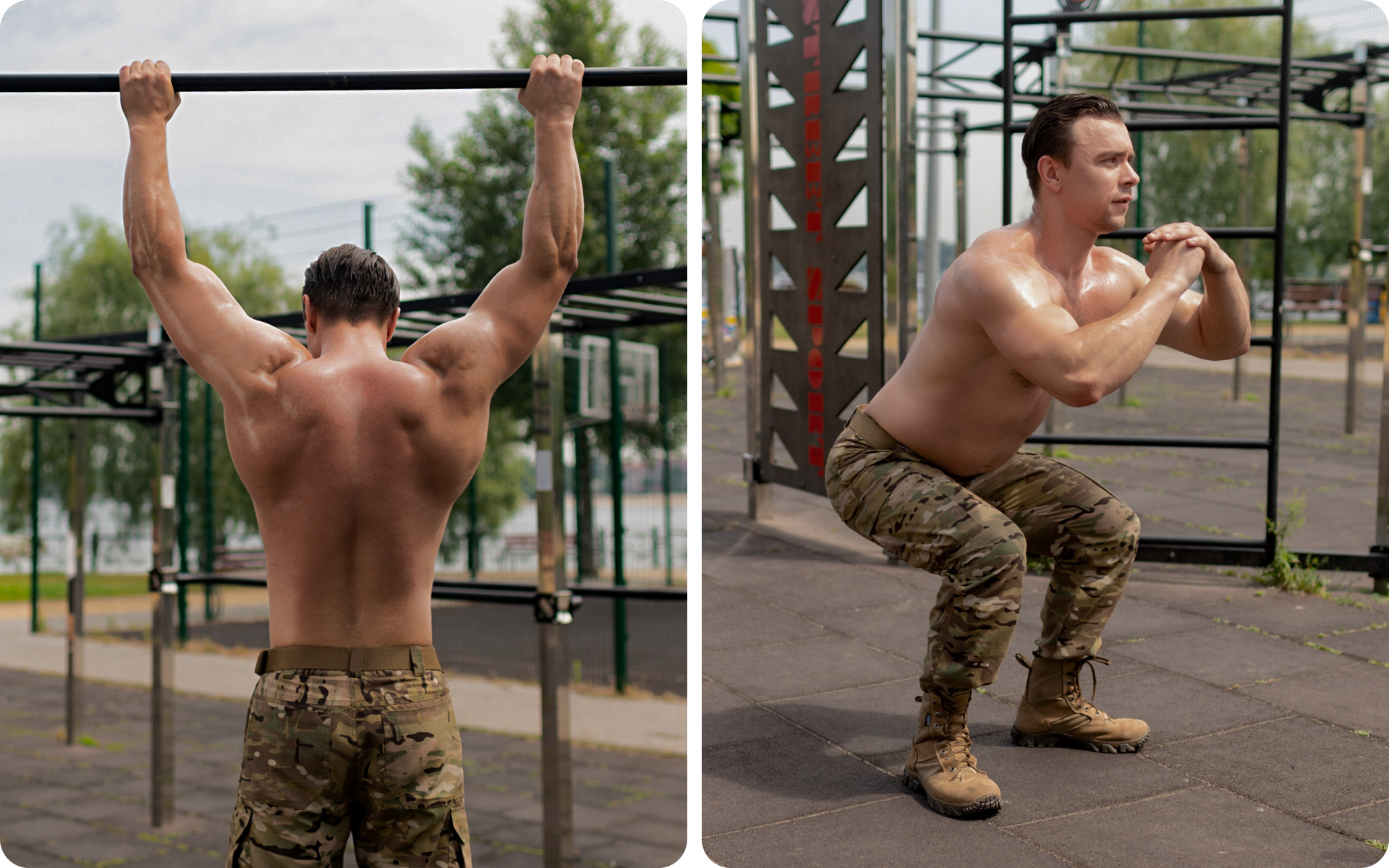
Tips to Perform a Back Squat Safely and Effectively
- Keep your core tight throughout the exercise
- Keep your knees in line with your toes, and don’t let them cave inward
- Lift with your heels, not your toes
- Do not round your back during the exercise
Here are some modifications for beginners and advanced trainees:
- Beginner Modification: If you’re new to squats, you should start with an air squat (no weight). Once you’re comfortable with the movement pattern, start with just the barbell (the empty barbell weighs 45 pounds). Work your way up to heavier weights as you become stronger.
- Advanced Modification: To make the back squat more challenging, you can add weight to the bar. Experiment with different weights to find what works best for you. You can also try variations such as the front squat or the overhead squat to challenge yourself further.
Common Squat Variations and How to Perform Them
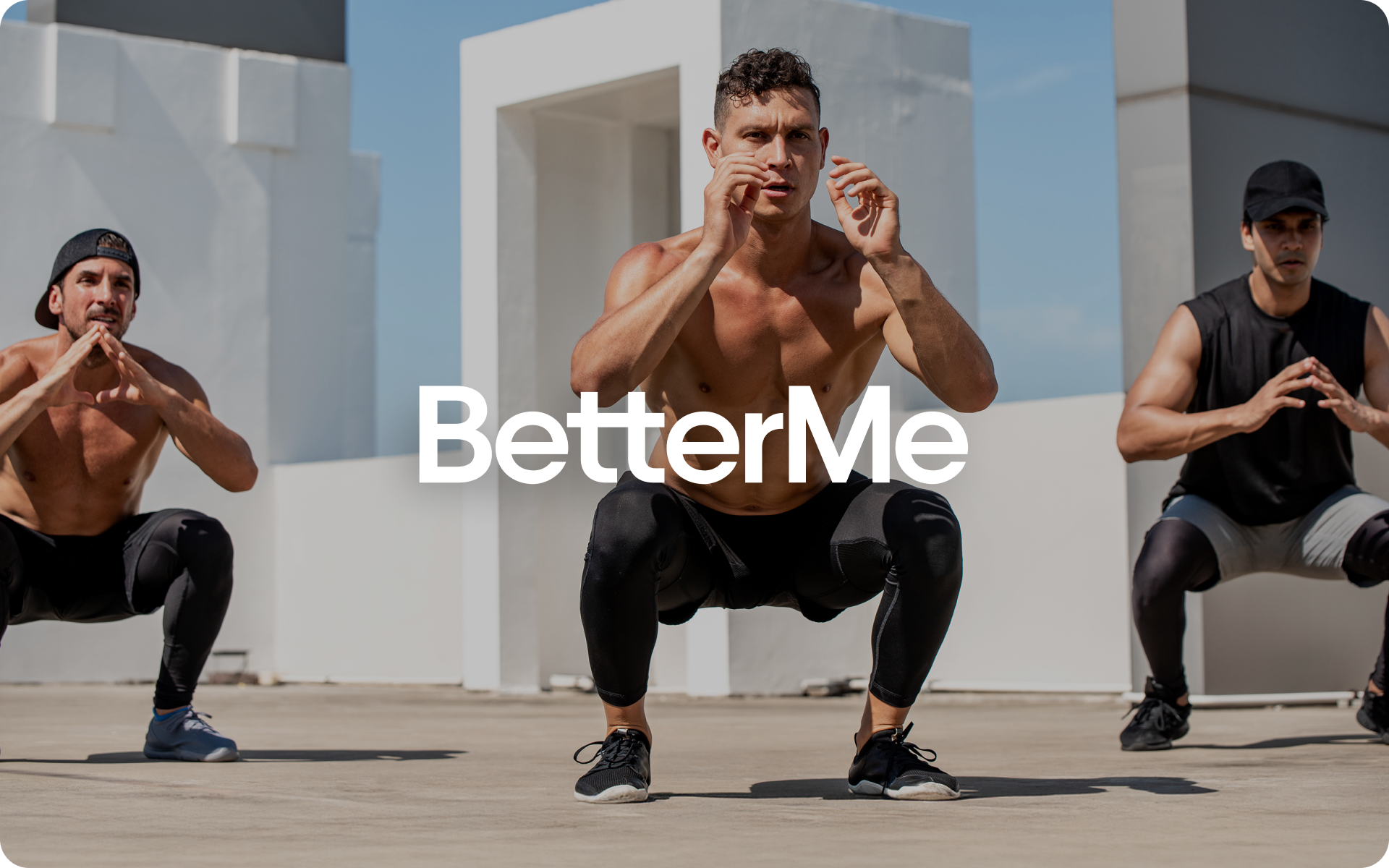
Here are eight squat variations, together with instructions on how to execute them, which muscles they target, and who they’re best suited for:
1. Front Squat
The front squat is similar to the back squat, but the barbell is held on the front of your shoulders, with your elbows pointing forward. This variation places more emphasis on your quadriceps and core muscles. It’s ideal for intermediate to advanced lifters who are looking to target their legs.
To execute this:
- Start with your feet shoulder-width apart.
- Cross your arms in front of you and place the barbell on your front deltoids.
- Squat down, keeping your chest up and your core tight.
- Stand back up while exhaling, keeping the barbell secure and balanced on your shoulders.
2. Goblet Squat
The goblet squat is a variation that features a kettlebell or dumbbell held in front of your chest. It’s best suited for beginners who are still developing their form and technique. Goblet squats target the quads, hamstrings, glutes, and core muscles.
To execute this:
- Hold a kettlebell or dumbbell at chest level.
- Stand with your feet shoulder-width apart.
- Squat down, keeping your elbows inside your knees and your core tight.
- Stand back up while exhaling, keeping the kettlebell or dumbbell stable.
3. Sumo Squat
The sumo squat is a wide-stance variation that targets the inner thighs and glutes. It’s ideal for intermediate to advanced lifters who are looking for a challenging addition to their workout routine.
To execute this:
- Start with your feet wider than shoulder-width apart and your toes pointing outward.
- Squat down, with your knees in line with your toes and your chest up.
- Stand up while exhaling, squeezing your glutes at the top.
4. Bulgarian Split Squat
The Bulgarian split squat is a unilateral variation that isolates one leg at a time. This variation targets the quads, glutes, and hamstrings. It’s best suited for intermediate to advanced lifters who are looking to target each leg separately.
To execute this:
- Stand in front of a bench or step, facing away from it.
- Place the top of one foot on the bench.
- Squat down with your front leg until your thigh is parallel to the ground and your back knee is close to the floor.
- Stand up while exhaling, squeezing your glutes at the top.
5. Overhead Squat
The overhead squat is a challenging variation that targets the lower body, upper back, and shoulders. It’s best suited for advanced lifters who have developed proper mobility and stability.
To execute this:
- Stand with your feet shoulder-width apart.
- Hold a barbell overhead with a wide grip.
- Squat down, with the barbell stable overhead and your chest up.
- Stand up while exhaling, keeping the barbell stable above your head.
6. Box Squat
The box squat is a variation that involves sitting back on a box or bench during the squat. It’s ideal for athletes and lifters who are looking to improve their explosive power and acceleration. It can also be good for beginners who need to improve their form before they add weight. This variation mainly targets the glutes, hamstrings, and lower back muscles.
To execute this:
- Set a box or bench behind you at knee height.
- Stand with your feet shoulder-width apart.
- Squat down and sit back onto the box, keeping your chest up and core tight.
- Explode up off the box while exhaling, squeezing your glutes at the top.
7. Zercher Squat
The Zercher squat is a variation where the barbell is held in the crooks of your elbows in front of your body. This variation targets the legs, glutes, and core muscles. It’s best suited for advanced lifters who are looking for a challenge.
To execute this:
- Hold the barbell in the crooks of your elbows, with your hands clasped together.
- Stand with your feet shoulder-width apart.
- Squat down, keeping your chest up and your core tight.
- Stand back up while exhaling, keeping the barbell stable in the crooks of your elbows.
8. Pistol Squat
The pistol squat is a challenging variation that requires both balance and strength in a single leg. It targets the quads, glutes, and core muscles. It’s best suited for advanced lifters who have developed proper mobility and stability.
To execute this:
- Stand on one foot with your other foot extended in front of you.
- Squat down on one leg while keeping your chest up and core tight.
- Stand back up while exhaling, squeezing your glutes at the top.
Read more: A Simple Guide To Doing Wall Squats With Ball
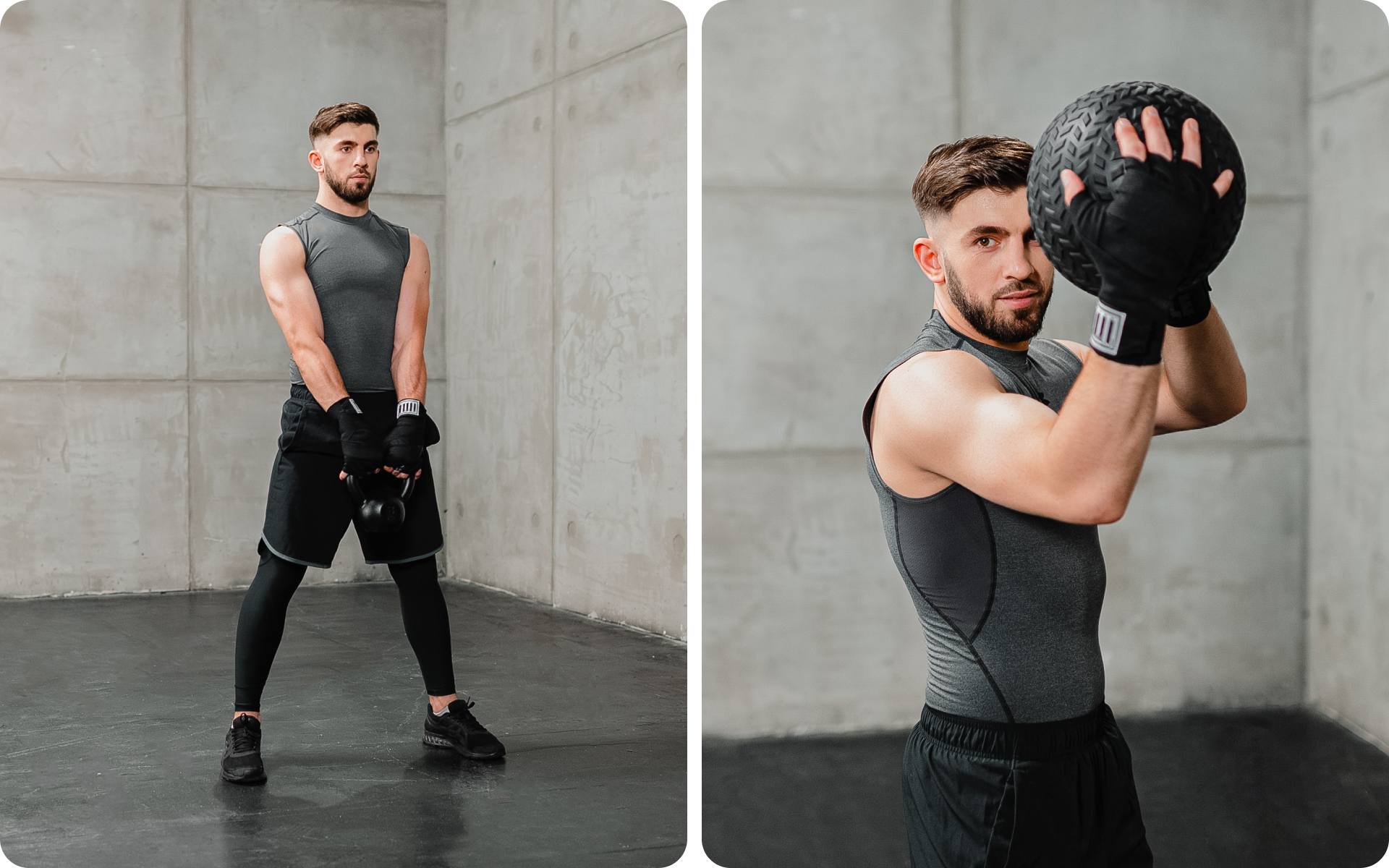
What Are the Disadvantages of Squats for Men?
The main disadvantage of squats for men is the risk of injury if proper form and technique are not adhered to. This can include strain or tears in muscles, tendons, ligaments, or even more serious injuries such as herniated discs. In addition, improper form can lead to imbalances and muscle asymmetry, which can affect long-term strength and performance (7).
Another potential disadvantage of squats for men is the risk of overtraining. As squats are a compound movement that targets multiple muscle groups, these muscles can easily be fatigued or overworked, which can lead to decreased performance and potential injuries (8).
The benefits of squatting every day are not worth the risk of overtraining and injury. You should include rest days in your workout routine to allow for proper recovery.
Finally, some men may find that squats don’t target a specific muscle group or area of the body that they’re looking to improve. In this case, it may be beneficial to incorporate other exercises that target those areas, rather than relying solely on different types of squats for overall leg strength and development.
In our Calisthenics Warm Up 101, we discuss the importance of proper form and technique in reducing injury risk and maximizing performance.

FAQs
Do squats increase testosterone?
Squats increase testosterone, particularly when performed at a high intensity. Testosterone is a hormone that plays a significant role in muscle growth and development, and studies have shown that squats can elevate testosterone levels immediately after performing the exercise (4).
A study by the University of Texas found participants who performed squats with a weight equal to 80% of their one-rep max experienced a significant increase in testosterone levels post-workout. This is because compound movements such as squats require the use of multiple muscle groups, which can lead to a greater release of testosterone (6).
Furthermore, high-intensity workouts stimulate the release of growth hormones such as testosterone, GH, C, and IGF-1, which are essential for muscle growth and tissue repair (11).
However, the increase in testosterone from squats may only be temporary and may not have a significant impact on overall hormone levels. In addition, factors such as diet, sleep, and overall health can also affect testosterone levels. Our fasting diet for men article on how to fix your diet to increase testosterone.
How many squats should a man do a day?
A man should do an appropriate number of squats based on his fitness goals and current physical capabilities.
Beginners may perform 3-4 sets of 8-12 reps for muscle growth and strength development. Intermediate to advanced lifters may increase the number of sets and reps, using a weight that challenges them.
Some fitness experts recommend a general guideline of 1-2 sets of 8-12 reps for 3-4 days a week for overall leg strength.
Why is the squat the king of exercises?
The squat is often referred to as the king of exercises as it’s a compound movement that targets multiple muscle groups, which makes it an efficient and effective exercise for building overall strength and muscle mass in the lower body (9).
Squats also have numerous variations that can target specific muscles or increase the difficulty of the exercise. Squatting is also a functional movement that mimics everyday movements such as sitting down and standing up, which makes it a practical exercise for everyday life.
Finally, squats can improve posture and balance, which leads to better overall movement and decreased risk of injury. For these reasons, the squat is considered to be one of the most beneficial and essential exercises for men.
Check out this Morning Calisthenics guide for more informative articles on exercises and fitness tips.
The Bottom Line
Squats offer a multitude of benefits for men, from reducing injury risk and improving balance to increasing cardiovascular health and bone density.
By targeting multiple muscle groups and improving strength, stability, and function, this exercise can be a valuable addition to any workout routine.
Incorporating squats into your routine can help you achieve your fitness goals and improve overall health and well-being, which makes them a must-do exercise for men of every fitness level.
DISCLAIMER:
This article is intended for general informational purposes only and does not serve to address individual circumstances. It is not a substitute for professional advice or help and should not be relied on for making any kind of decision-making. Any action taken as a direct or indirect result of the information in this article is entirely at your own risk and is your sole responsibility.
BetterMe, its content staff, and its medical advisors accept no responsibility for inaccuracies, errors, misstatements, inconsistencies, or omissions and specifically disclaim any liability, loss or risk, personal, professional or otherwise, which may be incurred as a consequence, directly or indirectly, of the use and/or application of any content.
You should always seek the advice of your physician or other qualified health provider with any questions you may have regarding a medical condition or your specific situation. Never disregard professional medical advice or delay seeking it because of BetterMe content. If you suspect or think you may have a medical emergency, call your doctor.
SOURCES:
- A SYSTEMATIC REVIEW AND META-ANALYSIS OF COMMON THERAPEUTIC EXERCISES THAT GENERATE HIGHEST MUSCLE ACTIVITY IN THE GLUTEUS MEDIUS AND GLUTEUS MINIMUS SEGMENTS (2020,nih.gov)
- Comparison of Core Muscle Activation between a Prone Bridge and 6-RM Back Squats (2018,nih.gov)
- Effects of Body Mass-Based Squat Training in Adolescent Boys (2013,nih.gov)
- Effects of heavy-resistance training on hormonal response patterns in younger vs. older men (1999,physiology.org)
- Effects of Resistance Exercise on Bone Health (2018,nih.gov)
- Endocrine response to high intensity barbell squats performed with constant movement tempo and variable training volume (2018,nih.gov)
- Narrative review of injuries in powerlifting with special reference to their association to the squat, bench press and deadlift (2018,nih.gov)
- Overtraining Syndrome (2012,nih.gov)
- The back squat: A proposed assessment of functional deficits and technical factors that limit performance (2015,nih.gov)
- The relationship between the deep squat movement and the hip, knee and ankle range of motion and muscle strength (2020,nih.gov)
- The role of hormones in muscle hypertrophy (2018,nih.gov)
